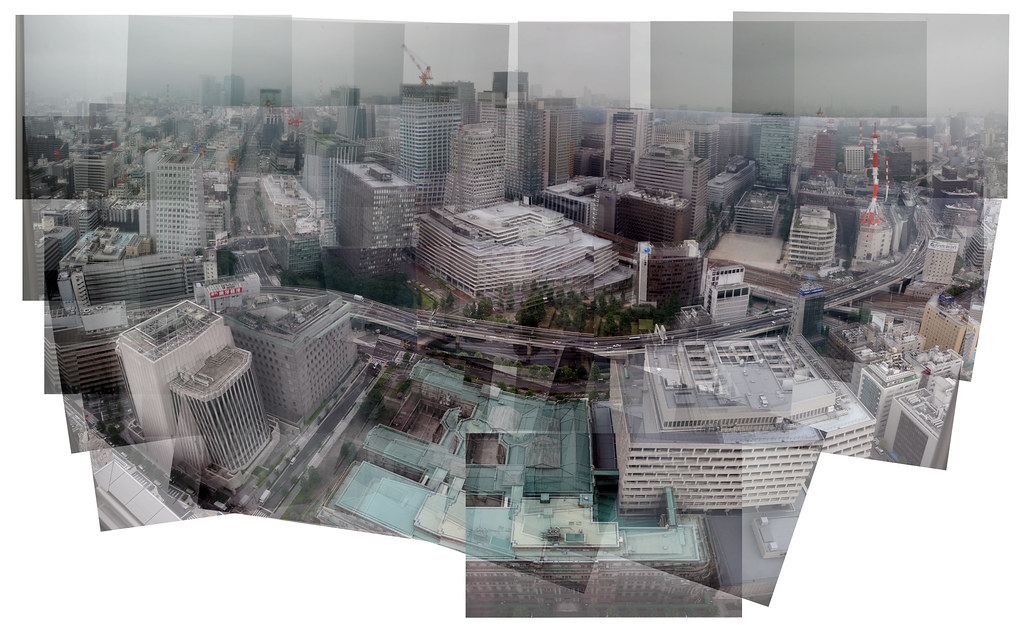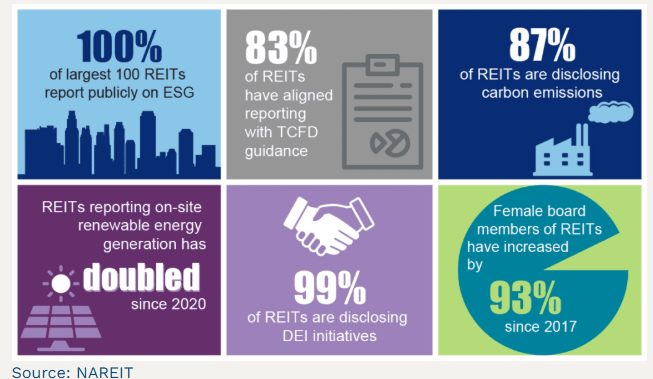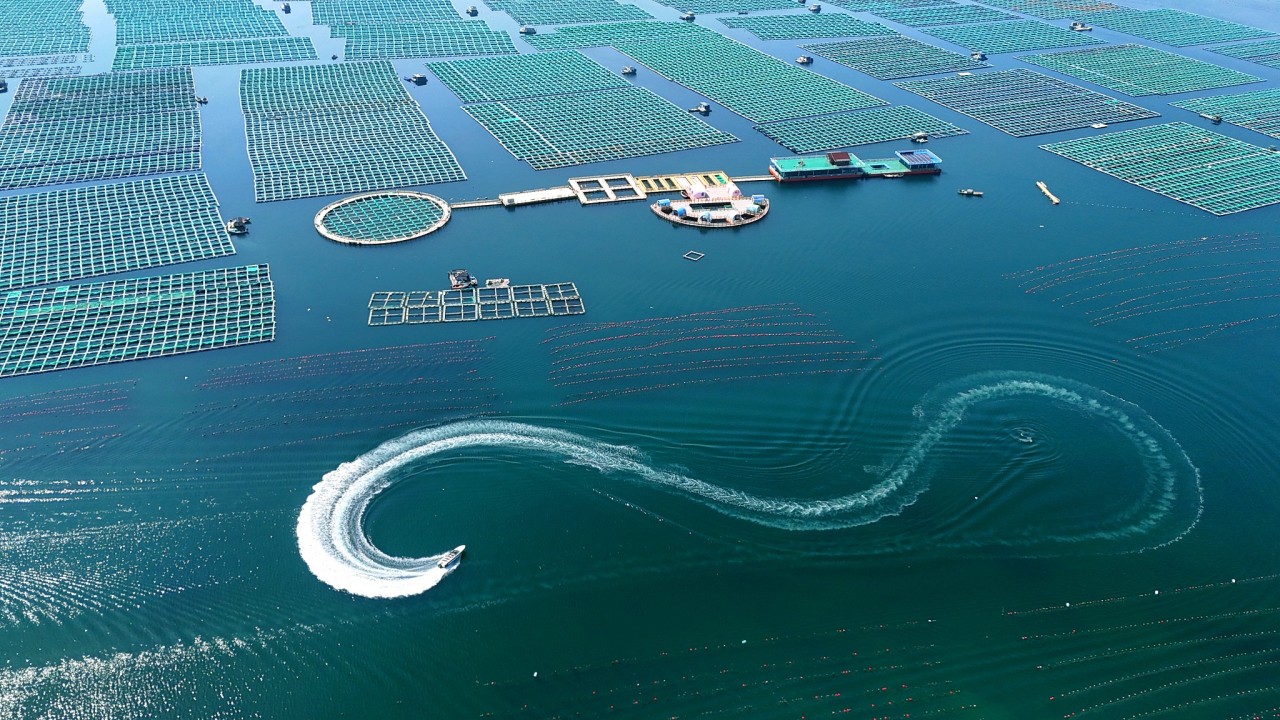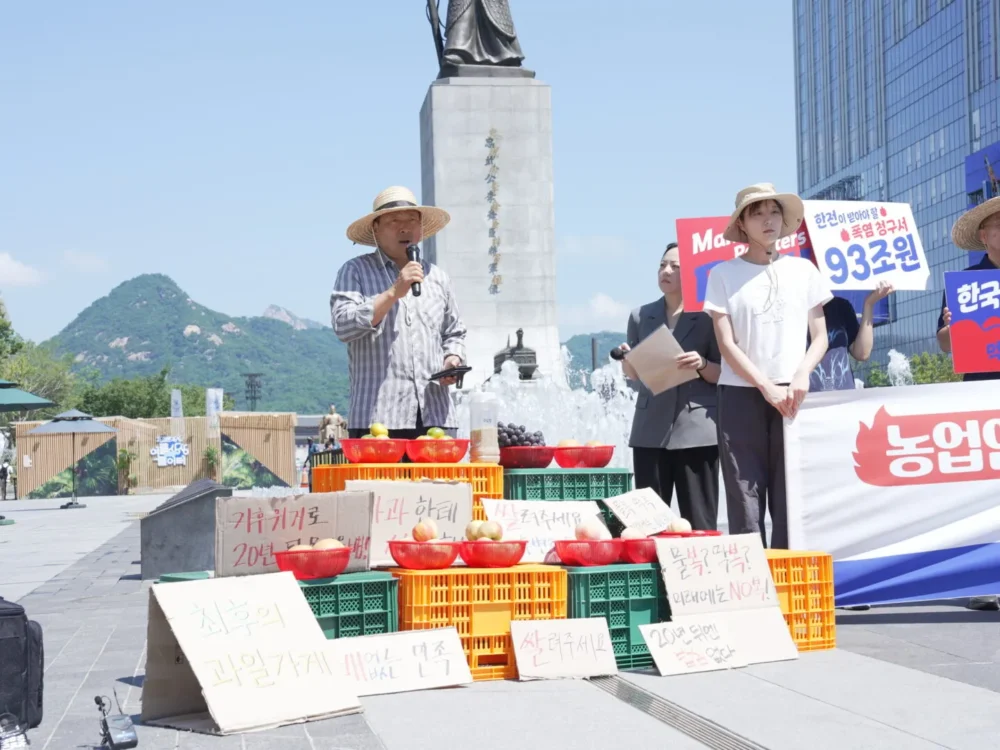There’s no time out – to win climate change challenges.
Taiwan’s 2009 Stadium is 100% Powered by the Sun with 3,300 lights and 2 Jumbo Vision Screens – by architect Toyo Ito. Image Credit. Inhabitat.com
AFL (Australia Football League) has an opportunity to play a role in slowing global warming and mitigating the existential threats we face.
The World Cup Football under Fédération Internationale de Football Association (FIFA) started the “Green Goal” program as a way to specifically address environmental concerns. The program was created in 2003, but its first debut was not until the 2006 FIFA World Cup in Germany and the 2008 UEFA (Union of European Football Associations) Cup in Switzerland.
In a 2018 report, there were over 50 Solar Football (Soccer) Stadiums and Sports Venues Globally but not in Australia: in Brazil, USA, Türkiye, France, Switzerland, Holland, Taiwan, Germany, Costa Rica.
Installing solar panels on major sports stadiums and on the roofs of cricket, soccer and AFL head offices could generate around 20,000 megawatt-hours of clean energy –
enough to power 2,890 households. This 2021 research was conducted by the School of Photovoltaic & Renewable Energy Engineering (SPREE) at the University of New South Wales and the Australian PV Institute (APVI).
Rooftop solar potential for AFL
Rooftop solar potential for Australian cricket
Rooftop solar potential for Australian soccer
Powering a sporting nation: Summary report

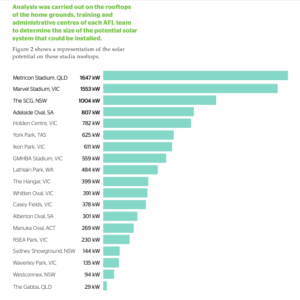
Image Credit: In a 2018 report,
Commercial / Industrial Solar + Battery Solutions. Cutting Costs and Saving the Planet
Australia has enough unused commercial and industrial rooftop space to supply at least 25% of our annual electricity use – five times as much as currently supplied by gas-fired generators. Australia is already the world’s top rooftop solar nation, per capita. But our solar is largely on our houses. We have four times as much residential solar as we do on commercial buildings. In Europe, it’s the opposite – there’s 1.5 times as much solar on businesses as on houses. The EU’s new Solar Energy Standard is expected to double rooftop solar capacity in four years. (A Conversations exert)
The Victoria Energy Policy Centre recently released a report the “Business Power” policy by Prof. Bruce Mountain, on the importance to set a policy for the uptake of large-scale battery-backed rooftop solar in order to generate more Roof-Top Solar Energy Solutions for large scale commercial warehousing, sports facilities and stadiums. A policy proposal that offers huge upside and managed marginal downside.
The key is for both ‘behind-the-meter’ production and storage, and large scale ‘front-of-meter’ production and storage, to have similar financial incentives to ensure uptake and energy efficiency. The development of large-scale battery-backed rooftop PV, capable of behind-the-meter trading in the electricity wholesale market, and in supplying electricity to the grid, is possible and needs to be explored with more urgency to meet renewable energy demands and emission reduction targets.
The proposal that is assessed here involves floor prices for electricity that is fed into the grid at certain times of the day from rooftop solar PV and from behind-the-meter batteries:
- A “solar feed-in floor price” is proposed for feed-in before 11am and after 2pm.
- A “battery discharge floor price” is proposed for feed-in between 6pm and 9pm.
Nearly a decade ago, the Clean Energy Finance Corporation estimated rooftop solar production potential in 2016 was 38 TWh per year in commercial and industrial zones. This was equivalent to a little under one quarter of end-use electrical demand in 2016.
Now in 2024, Victoria electricity distributors Citipower/Powercor/United have estimated that Victoria alone has 56.3 TWh of rooftop solar potential, of which only 7% had been developed. The roofs of factories, warehouses and similar commercial and industrial buildings holds an enormous potential for rooftop PV annual electricity production to be more than the total end-use demand for electricity in Victoria in 2023
The proposal that is assessed here involves floor prices for electricity that is fed into the grid at certain times of the day from rooftop solar PV and from behind-the-meter batteries:
- A “solar feed-in floor price” is proposed for feed-in before 11am and after 2pm.
- A “battery discharge floor price” is proposed for feed-in between 6pm and 9pm.
How should the policy support options be evaluated?
- Viability: for the modelled level of support, is the present value of revenues less costs likely to be positive, and so will pursuit of that Business Power option be investable
- Value-for-money Criterion 1: how much of the spot market revenue is accounted for by policy support? This measures how dependent revenues are on policy support. But Criterion 2 also matters (policy support might be a large proportion of revenues but a lower proportion of costs).
- Value-for-money Criterion 2: how does the policy support compare to the cost of the rooftop solar/battery/battery-backed solar? This measures much of the cost is met through policy support.
- Implied greenhouse has (GHG) abatement cost: what is the value of the policy support per tonne of GHG emissions abated as a result of the policy? Since the main rationale for a Business Power policy is to decarbonise electricity supply, the assessment of policy proposals in terms of their GHG abatement costs is an important metric in policy assessment.
Few energy policies offer a combination of a potentially huge upside and an easily managed downside risk. Policy makers, market participants and interest groups are encouraged to read this report and give their valuable feedback.
For More Information on the VEPC Paper Report by Prof Bruce Mountain HERE+







